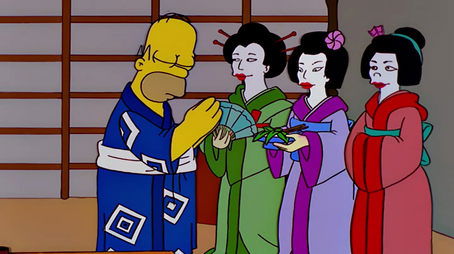
Sorry, we have not watched this yet.

After their bank account is drained at a cyber-cafe, the Simpsons go on a disastrous low-budget trip to Japan, where they wind up as contestants on a humiliating game show.
Sorry, we have not watched this yet.